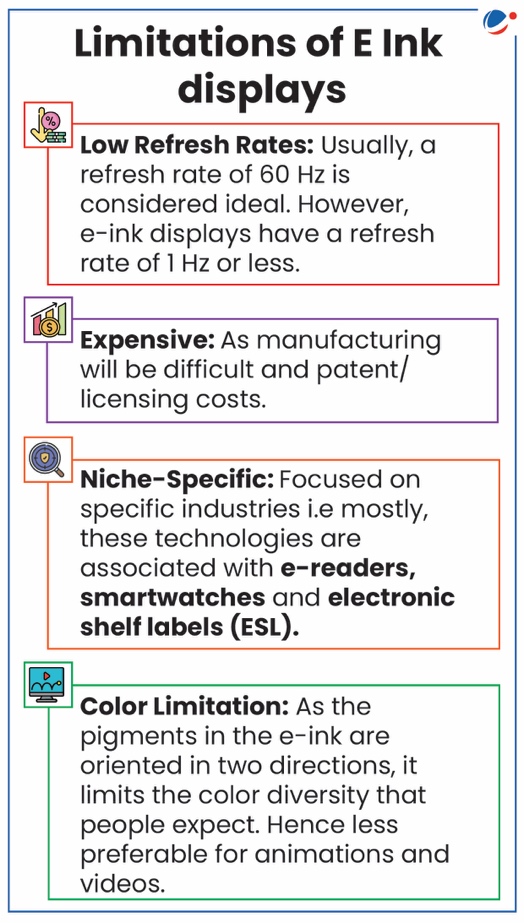Why in the News?
A new crowdfunded phone called the Minimal Phone by the Minimal Company features power-friendly monochrome E-Ink display.
About E-Ink display
- E-Ink also known as electrophoretic ink is a specific type of E Paper display.
- E Paper is a broad term for any display designed to mimic the appearance of real paper.
- It utilizes the same ink used in the printing industry today and mimics the appearance of ordinary ink on paper.
- Originally, E-Ink was only available in monochrome, but colour E-Ink became available in 2010.
- The screens work using tiny microcapsules filled with positively charged white particles and negatively charged black ones suspended in fluid inside the display (refer to the infographics).
- By applying positive or negative electrical charges to different areas of the screen, the white or black particles can be made to rise to the surface, creating the text and images on the display.
- It was originally developed in the 1990s at MIT and is now owned by E Ink Corporation.
- Applications: In cell phones, signs, and e-readers like the Amazon Kindle.

Advantages of E-Ink display
- Eye comfort: Unlike LCD and LED displays that use a backlight, E-Ink displays reflect light – just like paper. This makes them easier on the eyes for long reading sessions.
- Outdoor visibility: The lack of backlighting also means that they are easier to read under brighter lighting conditions, which isn’t the case with LCD/LED displays at all – legibility actually takes a hit under bright sunlight
- Long battery life: They require very little power since they don’t need a backlight and only use energy when the image changes.

Working of other display technologies
|



